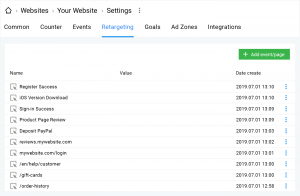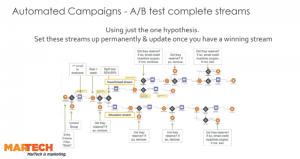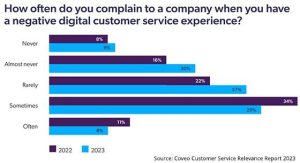Joshua Uebergang is the Director of Digital Darts, an Australian digital marketing agency that helps companies increase their traffic, leads, and, most importantly, sales.
What Is An SEO Audit?
An SEO audit is a process of checking a web site in a number of areas. Primarily, this process aims to ensure that your web site is up to current standards of being search engine friendly (and search engine compliant).
You should expect:
- a detailed analysis on your site’s current state in terms of performance in search, social media, type of links, anchor text, and any other information related to your web site
- an action plan along with a report describing a complete Internet marketing strategy plan
- a list of opportunities to improve your web site in terms of search performance and perhaps conversions
Who Should Work On Your SEO Audit?
If you have the budget, it’s best to hire an SEO auditor. Otherwise, you can make use of various SEO audit tools available on the web.
If you want to do the audit yourself, here’s an overview of the entire analysis based on the following categories:
- on-site or on-page factors,
- crawlability and indexability,
- social media status,
- off-site or off-page factors,
- mobile
- competitive analysis.
SEO Audit Preparation
Before you dive in to the analysis do the following first:
- Crawl the entire web site to diagnose its problems. (Ed.: we recommend A1 Website Analyzer)
- Consult Google Webmaster Tools and Bing Webmaster Tools
- Review the site’s analytics.
On-Site SEO And On-Page Factors
- Titles and Descriptions:
Should be unique for each page, within the specified width, and clearly indicates or implies what the page is all about and what the page has to offer.
Both A1 Website Analyzer [1] and Screaming Frog [2] have settings to see the width of your titles. Tip: Page Title Pixel Meter
Do the key pages have strong meta descriptions?
- URL Structure:
No invalid characters that need to be URL encoded (think spaces in URL’s that are translated to %20 or an em-dash showing up as %E2%80%94.
Clean structure. Human-readable. Guessable: www.example.com/clothes/men/socks/ makes it possible to guess there is a /clothes/women/
- Text formatting:
Proper, logical formatting. H1 for titles, H2 for subtitles, etc. <p>aragraph tags. Use bold and italics for the important parts, lists where necessary etc.
- Content:
Should be unique and free from duplicate content. Make sure you have quality content for your most popular pages. Also check content length and content freshness. Merge pages with little or no content or pages with similar content using 301 redirects.
For old or out-of-date content, plan out on how to make sure that these are updated on a frequent and steady basis.
- Internal linking:
Link the most important pages site-wide via your menu/s. Interlink pages where appropriate.
Verify your internal links work. You can filter your reports on header status code. If you didn’t use a tool to crawl your site, use Xenu [3] to check all your links.
- Outbound Links:
Make sure the links point to trustworthy, relevant sites, using normal anchor text.
Avoid redirects: you don’t want to cause the impression that you’re trying to “conserve” ranking power.
Use the “nofolllow” value with discretion.
Check if there any broken links.
- Images:
Descriptive but not overly long filenames.
ALT property describes succinctly what the image show.
Properly compressed with a balance for speed and quality.
- Ads above the fold:
Don’t rely on Adsense to tell you where to put ads. Familiarize yourself with the Top Heavy algoritm [4]. Remove or change the position of the ads that are not according to what is acceptable.
- Pagespeed:
Use the Google PageSpeed Insights tool [5] to measure the speed of some key pages. 60 for desktop is a score you can still live with. Lower starts to be concerning.
- User friendly 404 page:
What happens when you type a made-up URL for your site? What happens when you modify a URL?
Non-existing pages should always return a 404 status.
A 404 Not Found page should be user friendly. It’s not about reporting an error; it’s about keeping a prospect on your site.
- Schema Markup:
Use Google’s structured data testing tool [6] to verify your Schema markup works.
Identify opportunities to use Schema markup.
Crawlability And Indexability
- Google & BIng Webmaster Tools:
Check if search engines bots can access your web site without any problems.
Check the ‘Crawl errors’ reports.
- Robots.txt file:
Make sure it’s not restricting access to important sections of your site.
- Robots.txt file:
- Robots meta tag:
Check any case where you’re denying access: is this what is desired? Are the bots simply blocked or are they also disallowed from looking at the links on this page and following them?
In both the robots meta tag and the robots.txt case, be aware of creating “black holes” that suck up, but don’t pass, your linking power.
- HTTP Status Codes:
Identify and fix any URLs that return errors.
Make sure redirects use the 301 HTTP redirects. (To learn more about which type of redirects to use, click here).
Are non-existent pages returning a 404 status code?
- XML Sitemap:
Should be a well-formed XML document, submitted to your webmaster tools accounts, present and up-to-date view of the website.
Only create a sitemap if you can do so from your own data; third party crawlers can never be better than Google’s own crawlers. Don’t bother with them.
Delete sitemaps that just aren’t up to speed.
- Index Count:
Know as best as possible how many unique pages there should be for the site. Approximate where needed. Do a site: search and see how many results are returned. Navigate to the last past: how many results does it say there? Is there a notice that irrelevant results were hidden? If so, check the unfiltered view. Hunt down what’s going on: this is a red flag for a site that’s getting too large, stretching its relevance way too thin..
Social Media Status
- Primary Social Presence:
- Facebook business page
- Google+ business page
- Pinterest business page
- LinkedIn business page
- Twitter account
- YouTube
- Facebook business page
- Social Profiles:
Must be complete, up to date, and optimized within reason. Where possible add links to your site and to your other social properties.
- Social Engagement:
Quantify how well your site is accumulating social currency in each of the most important social networks. Evaluate the authority of the individuals that are sharing your site’s content to ensure that reputable and highly influential people are sharing your content.
- Social Sharing Buttons:
- Facebook Like
- Tweet
- LinkedIn (if appropriate)
- Google+ (idem)
- Pinterest (idem)
- Facebook Like
- Newsletter:
Is the distribution regular and steady or is this an expired call to action? Archives available on the web?
- RSS feed:
Does it work? If present, does it show only snippets to help minimize the impact of scrapers?
Off-site Or Off-page Factors
- Inbound Links:
Check the links pointing to the site. Use a commercial service for best data. (Ed.: we recommend Majestic)
Pay careful attention to the anchor text. The brand, domain, “empty anchor text” (i.e., image links), and generic terms like click here should dominate the top 5-10. If commercial anchor text (e.g. “buy cheap flowers”) dominate before these, take care of that problem ASAP.
How’s the trust of the sites linking in? Should you try to get rid of some of these links?
Is the site growing and losing links at a normal rate? If not, is there a concerted campaign to get bad links pointing to the site? Or is the site losing links too fast — and why is that?
- Branding:
Do a brand search to check if your website is ranking well for your company’s or your brand’s name. The stronger the brand association is to Google, the more and the more prominent sitelinks the result will have.
- Trust:
Check webmaster tools for DMCA notices. Fix those.
Check reviews. Are they positive? If negative, is someone dealing with them?
Mobile
- Mobile version:
Is there a mobile version of the site? Note what type: mobile (sub)domain, responsive, adaptive. (To learn more about the difference between responsive and adaptive design, click here).
- Viewport:
Is the viewport (correctly) set?
- Usability:
Can the text be read or is the font too small? Can links and buttons be clicked? Do you need to zoom in all the time?
- Menu:
How easy is it to get around? Are the key pages and key sections easily accessible? If something isn’t in the menu, can you still get to it?
Competitive Analysis
- Compare:
How do the site’s pages stack up against key competitors? Better? Worse?
- Identify:
What is the competition doing that your site isn’t?
- Opportunities:
What’s missing from this niche? What’s nobody doing, including you?
Conclusion
SEO Audit Reports should be extensive. The report should not just list all of the existing status of your site or the errors but should also contain recommendations and actionable suggestions as to what needs to be done, repaired, or corrected in every aspect of your web site. It should be written to serve multiple audiences.
Considering the number of aspects that need to be checked, a good report should present a sensible and reasonable prioritization scheme. As an added bonus, your auditor may also add a list of free or online tools that can assist or help you with the audit.
* Leader image with photo by Defence Images
The post How To Do A Complete SEO Audit appeared first on Search Engine People Blog.
(462)








